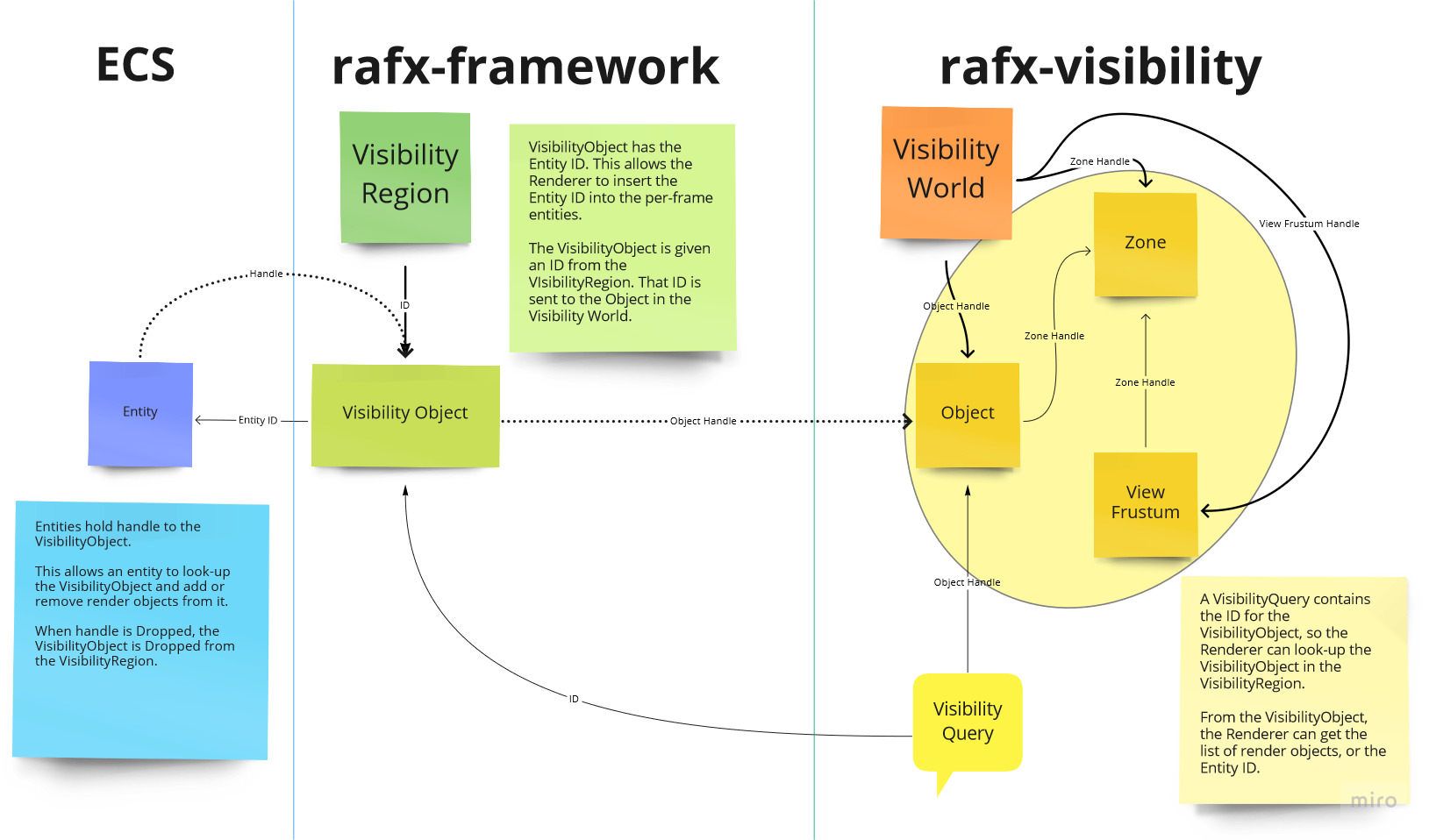rafx
Visibility Resource

A VisibilityResource is a ref-counted wrapper around 2 Zones. One of the zones is designated “static” and the other
designated “dynamic”. When registering objects with the resource, the application may pick if it is “static” or “dynamic”
– this will assign it to the corresponding Zone and return a VisibilityObjectArc. Note that the “static” or “dynamic”
assignment is not a meaningful distinction by the underlying VisibilityWorld – it is ok to move an object that was
registered as “static”. The reason for separating “static” and “dynamic” assignments is to support a future capability
for running the “static” visibility calculation earlier in the frame and combining it with the “dynamic” visibility later
in the frame. [1] There are also occasions where only static or dynamic objects will be rendered (i.e. caching shadow maps)
An application view is registered with the VisibilityResource and returned as a ViewFrustumArc.
The VisibilityObjectArc is a ref-counted wrapper around an VisibilityObjectHandle. This struct contains functions for setting
the position, id, and other fields. The set functions are implemented under the hood using async commands over a channel
to the VisibilityWorld. Each VisibilityObjectArc contains a list of features registered with that handle. Particular
features may be shown or hidden on an entity in the world by adding or removing the feature from the VisibilityObjectArc
associated with that entiy.
The ViewFrustumArc is a ref-counted wrapper around 1 or 2 ViewFrustumHandle representing a view of the “static” Zone
and a view of the “dynamic” Zone in the VisibilityResource. This struct contains functions for setting the location,
id, projection, and querying for visibility. The set functions are implemented under the hood using async commands over
a channel to the VisibilityWorld. Each RenderView requires a ViewFrustumArc so that visibility can be calculated
for that view.
ObjectId is a helper to transmute between a struct T: 'static + Copy + Hash + Eq + PartialEq with the same size as a
u64 and the u64 required for the id in the VisibilityWorld.
let entity = world.push((transform_component.clone(), mesh_component));
let mut entry = world.entry(entity).unwrap();
entry.add_component(VisibilityComponent {
visibility_object_handle: {
let handle = visibility_resource.register_static_object(
ObjectId::from(entity),
CullModel::VisibleBounds(load_visible_bounds(&floor_mesh_asset)),
);
handle.set_transform(
transform_component.translation,
transform_component.rotation,
transform_component.scale,
);
handle.add_render_object(&floor_mesh_render_object);
handle
},
});
When a RenderView is needed in the current frame, the associated ViewFrustum is queried for visibility. The visible
VisibilityObjectHandles are mapped to their VisibilityObjectArcs and the associated RenderObjects are added to the FramePacket
of the relevant RenderFeature – if the RenderView is registered for the RenderFeature and any RenderPhase required
by it.
[1] http://advances.realtimerendering.com/destiny/gdc_2015/Tatarchuk_GDC_2015__Destiny_Renderer_web.pdf